Are you guilty of publishing product jargon? You’re not alone. In most businesses, there is no internal process for translating technical product data into more valuable, customer-centric language. Here's how an eCommerce product taxonomy can change that.
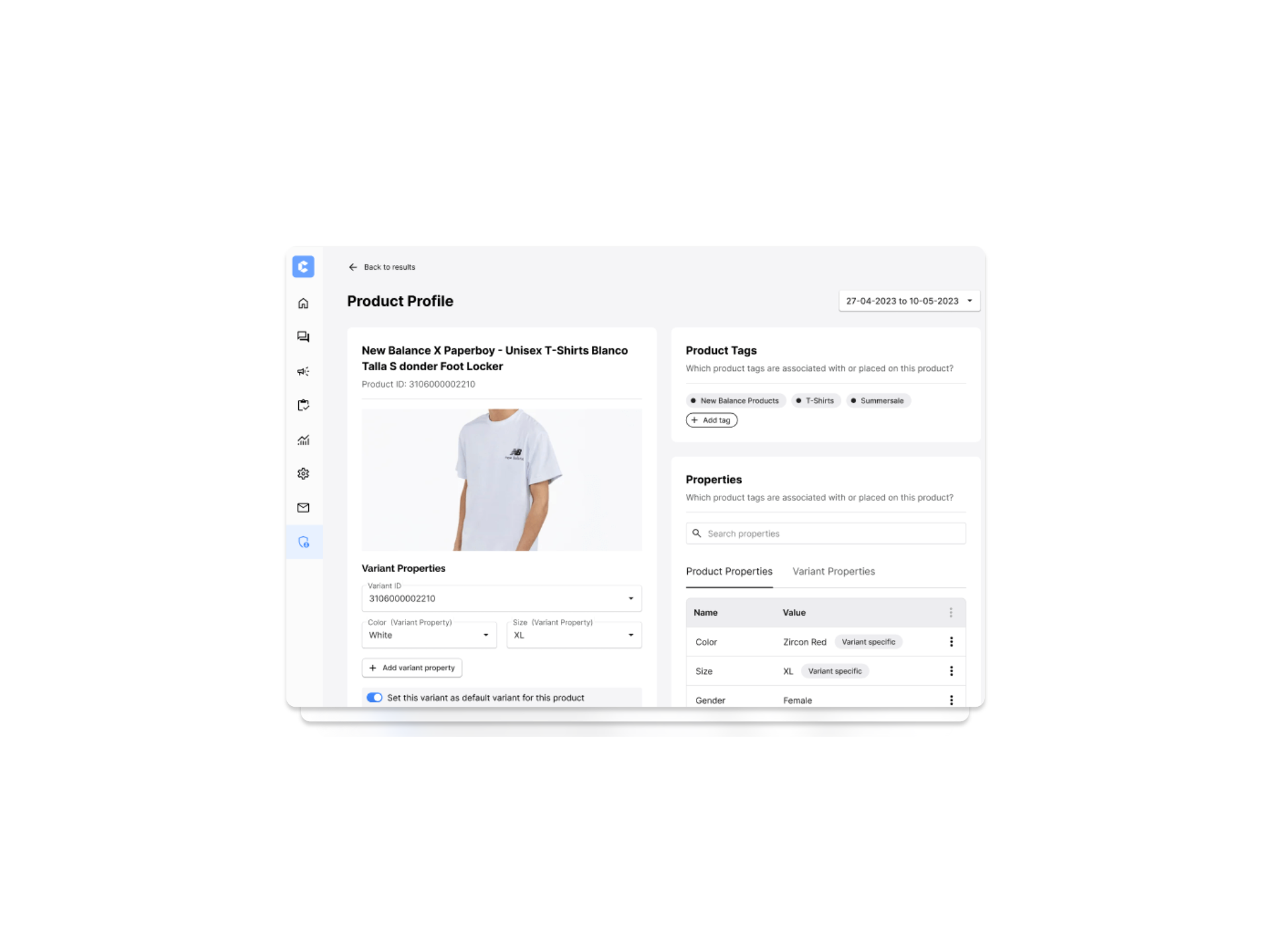
Are you guilty of publishing product jargon? You’re not alone. In most businesses, there is no internal process for translating technical product data into more valuable, customer-centric language. Here's how an eCommerce product taxonomy can change that.
Technical product jargon doesn’t stick in your shoppers’ memory. Users can be exposed to copious sentences containing complicated specs and still have no idea what they’re reading if the description gives them nothing to hold on to. It’s forgettable because it’s hollow.
If your eCommerce experience isn’t making inroads with your audience, then you’re stuck with a product catalog that isn't translating. This tends to result in the very difficult job of telling a story that doesn’t resonate. As such, you lose all the value that makes your product unique. And if you lose out on the narrative that compels your audience, you lose your differentiation and sales.
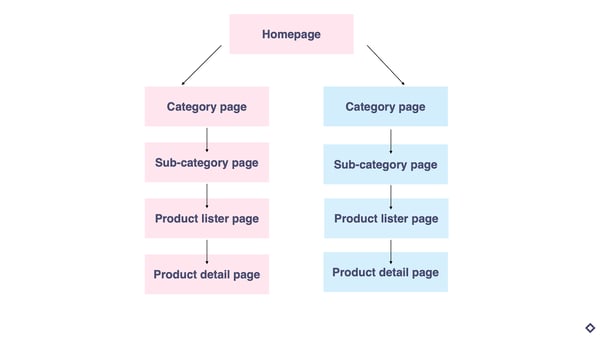
A product taxonomy framework
A product taxonomy is a system used for organizing and categorizing concepts in a meaningful and helpful way.
When retailers organize their stores into hierarchical categories, it's usually done using a product taxonomy. These taxonomies are structured top-down, meaning you start from a high-importance category or page and work your way down, with branches that shouldn’t link back to the top. In other words, it isn’t cyclical.
These structures are considered important because they trigger the subconscious ease that’s felt from seamless customer journeys.
For example: it's 7:00 am on a Monday morning. You realize you're out of coffee, so you dash for the nearest supermarket, shuffle through the store in your PJs, and make a beeline straight for the coffee section...only to find yourself staring up at diapers. As it was, the retailer changed the layout overnight. What was once a subconscious journey through your favorite store (and to your favorite aisle), now jolted you back into a coffee-less reality. Suddenly, you're forced to navigate around the supermarket to Breakfast / Cereals before you finally find the Teas / Coffee section.
In eCommerce, having a strong product taxonomy is the crux of a sound product discovery strategy.

A COS product listing
If the system used to organize a product catalog (whether online or off) isn’t working appropriately, it leads to a shopping experience brimmed with confusion.
When users are looking for something specific, and filters aren’t applied logically, it can be challenging for them to find what they need. This can result in catastrophe for a business trying to find its feet – a Forrester study indicates that "poorly architected retail sites" only sell half as much as better-organized ones. It’s become clear that your categories, and the navigation experience they provide, directly impact your bottom line.
While categorization deals with navigation, it also touches on filtering, labeling, and – most importantly – describing.
So, how would you describe the fabric around the model’s neck pictured above? To many (myself included), it’s a scarf. To some, a bandana or a kerchief. Depending on your location and knowledge of fashion, there are several terms reserved for what is typically referred to as a scarf. If you search for the term “scarf” instead of “bandana,” you could be left with empty search results. This is because not every customer is an expert in the language of navigating a product catalog, and the relevant system at play shouldn’t expect them to be.
While diversity in language has allowed for rich, accurate eCommerce product descriptions, it has also created a problem for retailers: confusing, unclear product taxonomies that often feel beyond control.
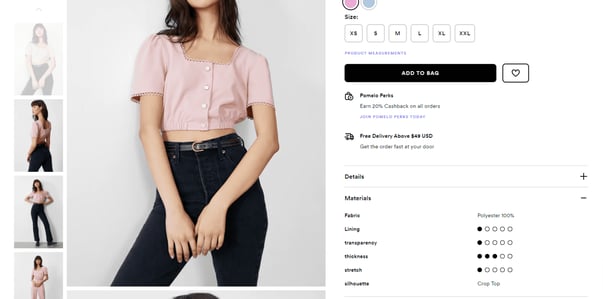
Pomelo utilizes enriched data in descriptions to highlight look and feel
The most common way to manage product taxonomies is through a data feed. After identifying a product within a category, you can add additional data fields to further distinguish the product from others within the same category. These distinguishing factors are called product attributes.
Loading your data with attributes helps improve its overall quality, which in turn boosts customer satisfaction. According to a study by Deloitte, product quality and shopping experience account for two of the top six factors driving shopper loyalty.
The challenge for retailers today, however, is what exactly constitutes great value, as shoppers view and respond to product attributes differently.
This is where product taxonomies come in. By providing more detail about given products, retailers can ensure their shoppers easily find and purchase the products that best fit their needs. When product catalogs are supercharged with the language your customers use, a fundamental shift in your online shopping experience occurs.
“By enriching your product data with the language your customers understand, you can achieve a level of product discovery that’s clearer, more attractive, and much more personal – resulting in an experience that is as rich as it is informative” – Rodger Buyvoets, Crobox Founder & CEO.
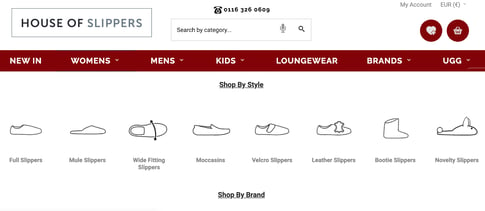
House of Slippers' taxonomy is horizontal and shows images of their categories.
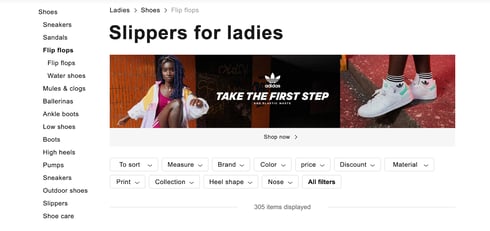
Zalando’s taxonomy is a vertical bar on the left-hand side, with clear filtering options on the PLP.
There really is no industry standard for taxonomies in retail. Even direct competitors like Adidas and Nike will use completely different systems of organizing their products.
Basically, it’s like going to the library. Every library has a different system of organizing books, from Dewey decimals to author names.
Why does this matter? Well, for retail, this makes sharing product information across departments all that more important. Once you can share this information, it makes it so much easier to approach your taxonomies. Here's how else you can benefit:
Visitors to your site can generally be classified as searchers or browsers.
With browsers, products must be in the right place, but you tend to have a little more time to deliver on the search terms. Searchers, however, know exactly what they are looking for. They are more specific and expect to find exactly what they want, typically accompanied by a list of alternative selections.
Without the right product classification in place, shoppers will rarely compensate by continuing to try and find the products they want. They just give up.
A well-established taxonomy will allow your website to display related products regardless of shoppers’ way of searching. So rather than losing a sale if a product is not available, you get that conversion by offering something else.
Conversion rates aside, product taxonomies also have a big impact on internal decision-making. Solid reporting and analytics feedback are needed to know which products are selling and which are not.
As with any reporting system, good input is key. Distinct categories and correct labeling make it much easier to deliver accurate numbers across a full product catalog. When it’s clear what each product is called and where it lives, reports are more reliable. Decisions on which direction your products should take then become more data-driven and effective.
Most importantly, however, implementing a well-structured product taxonomy is a strategic move that can significantly benefit your business in several ways. First and foremost, it enhances the customer experience by improving navigation and filtering capabilities. It caters to both casual browsers and goal-oriented shoppers by providing a user-friendly interface that allows customers to quickly find what they're looking for. By using customer-centric language and offering intuitive categories, it humanizes the shopping experience, making it all the more relatable and enjoyable.
A product taxonomy strategy is important because the sheer volume of information and choices online can be overwhelming. It solves this problem by acting as a roadmap for customers, guiding them to their desired products, and streamlining the decision-making process. Let me break down the technicalities:
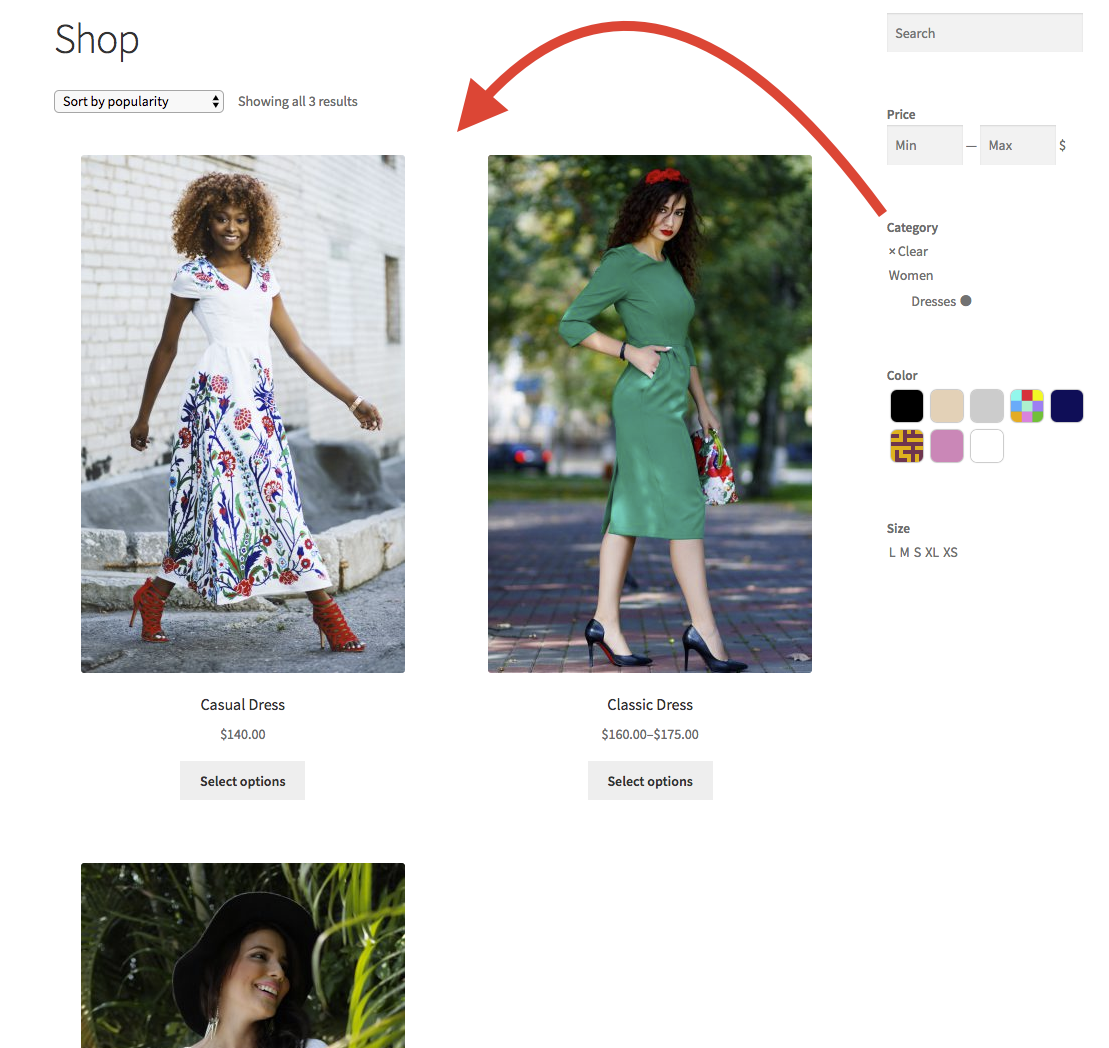
Filtering shows product categories which shoppers can click on.
By introducing a tool that logically categorizes products and assigns attributes, it fosters a sense of clarity for the user. This clarity, in turn, empowers them to navigate and refine their searches based on various parameters like size, color, brand, or price – for example.
Given that the success of an eCommerce venture heavily relies on a smooth user journey, investing in a robust product taxonomy strategy is not only advisable but also instrumental in enhancing the overall customer experience through improved filtering.
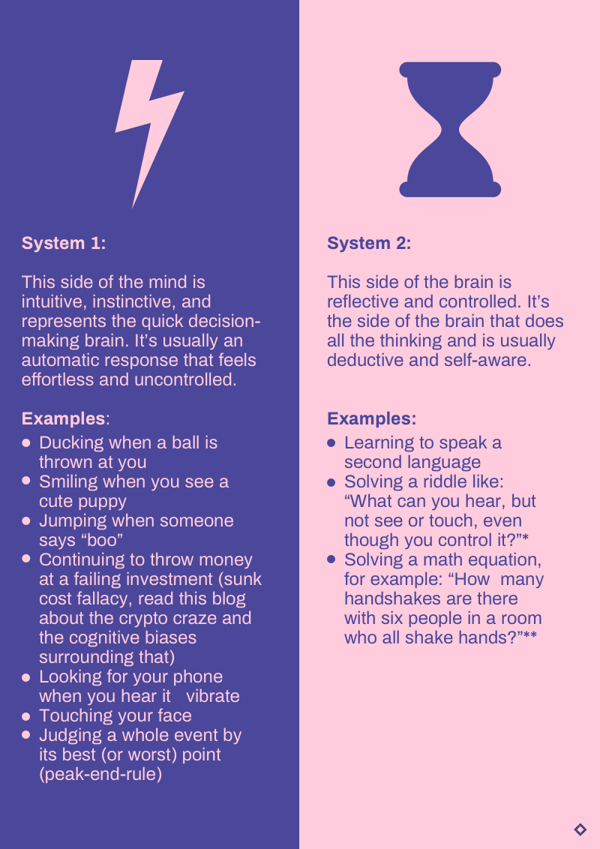
Systems of thinking driving behavioral economics
Without an organized webshop, shoppers will have to use their System 2 way of thinking. According to behavioral economist Kahneman, System 2 is the conscious, reflective, and deliberate side of the brain when it comes to decision-making.
What merchandisers really want to tap into is System 1: Subconscious, effortless, and quick reaction times. Why? Your customers will leave a site in fifteen seconds if their journeys are stunted in some way, or the webshop doesn’t deliver on familiar UX. More organization = elevated product discovery.
The path to finding and exploring products online is all about the decision-making journey your customers undergo. If you can provide an easy, organized, and clean taxonomy, your shoppers won’t have to think too hard about where they’re going. Unless, of course, they have a specific product in mind.

Dior's key to product discovery lies in how they facilitate search
If your customers have a specific product or keyword in mind, they’re more likely to use your search bar, right? A search engine optimized taxonomy will facilitate product discovery, both within your website and across the web. The best webshop designs go hand in hand with the best taxonomies, and can easily convert visitors into customers.

Love Stories uses the Product Finder to help guide customers
Optimizing your sales requires expert knowledge. The key lies in translating your technical product attributes into tangible benefits that relate to your customer needs. With a well-established taxonomy in place, customers
can move easily through all levels of your catalog in search of what they want.
However, finding the right product can be a challenge. This is where a Product Finder comes in.
By improving your data quality and implementing a product taxonomy, you can ask the right questions and recommend the perfect products based on users’ answers. This results in a high-touch encounter that recreates the in-store experience for your webshop – uncomplicated and clearly arranged.
Love Stories (pictured above) brought the personal touch of in-store shopping online with their bralette finder. By guiding the user journey with fit and style advice, they could gather insights about customer behavior to further optimize the flow and create more contextual content.
At Crobox, our Product Finders are customized per category. By leveraging our humanized taxonomies directly in your finder experience, you can improve your product discovery for categories that are deemed high-priority.

Siloed workplaces keep eCommerce business from reaching their full potential.
Sharing product data across departments requires an un-siloed approach. I know many of you are suffering from silos, departmental or data-wise, which makes it harder to get a product taxonomy strategy up and running.
In short, your first task should be to centralize and share your product data, to make creating a taxonomy easier. Then you can reap the benefits of a strong product taxonomy.
And although there is no industry standard, there are still some best practices to help you get up and running smoothly. Let’s take a look.
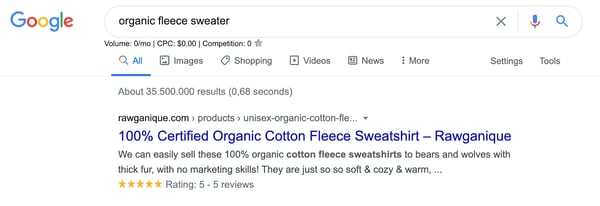
Leveraging a product taxonomy for SEO purposes
You have to make your taxonomies search engine optimized, otherwise, this will negatively impact product search and discovery and leave your customers frustrated. Optimizing your taxonomies includes adding additional content like images, Meta Titles, or Meta Descriptions that relate back to your target keyword.
Google wants to provide users with the right information they are looking for, at the right time. Optimizing your taxonomies by doing extensive keyword research into what terms your customers are looking for will go a long way.
Take the Rawganique example above. They win first place on Google’s SERP for this keyword, but the real magic is how they embed this keyword in their product description. The best practice for SEO is to follow through with your target words without keyword stuffing.
(A keyword-stuffed URL will look something like this: rawganique.com/shop-organic/organic-fleece/100%-organic Which you should avoid at all costs!)
You should aim to optimize your URLs with your keyword of choice in order to organize your products better and make product discovery easier for your customers. You can also see what your customers are searching for by using faceted search: Looking at how they filter through your page to refine their results (again, this is part of collecting behavioral data).
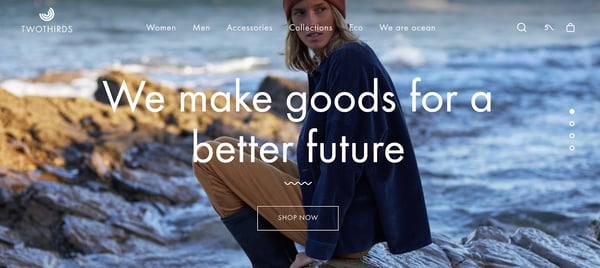
TwoThirds' product category includes stories around their eco-materials
This product taxonomy best practice may seem straightforward but is something that many retailers are still lacking. While customer-centricity is all the rage, retailers are falling behind on understanding their products.
But if you can understand what product features are important to your customers – e.g., what attributes drive behavior – then a product-driven customer-centric approach will fall easily into your lap.
So how do you understand your products on a deeper level to facilitate your product taxonomy strategy? You should ask yourself:
A product-centric approach on-site will help you continuously optimize your product datasets. And with strong datasets comes stronger taxonomies – quote me if you like. The more structured your data, the stronger your taxonomies, and the better your product discovery will be on-site.


Nike product taxonomy in AE vs. the UK
Every country or culture will have a different way their consumers browse a webshop. That’s why customer segmentation is so important. Because of seasonality in the UK, Nike includes a “Winter Wear” category in their taxonomy, which isn’t included in the Arab Emirates webshop, for obvious reasons. In short, you need to optimize your taxonomy given your audience.
“We’ve seen with our own clients that taxonomies differ per country. In most cases, you can’t have the same taxonomy in France as you will in the UK. It’s thus important to keep optimizing per geographic location, or your taxonomies will cause friction in the buyer’s journey.” - Leonard Wolters, CDO at Crobox
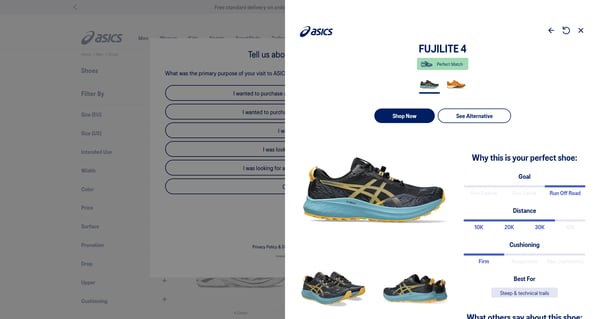
ASICS Shoe Finder tool
What you’re selling is dynamic, and so are your customers’ choices. Optimizing your taxonomy doesn’t work unless you are continuously testing and adapting elements of it. If you do a big reorg of your taxonomy, for example, you should test your navigation before going live.
Product hierarchies, therefore, must also be improved constantly by looking at customers’ responses. Any duplications or discrepancies in categorizations can lead to a lower desire to return to the store – which is why testing to keep an eye out for user behavior on product pages is vital. Conducting A/B tests are recommended in arriving at the best product taxonomy and analyzing product performance in relation to its listed features and attributes. Testing should focus on improving conversions while binding customers’ intentions, product classifications, and brand tone with a single thread. Loyalty and trust are deeply entwined with a taxonomy strategy.
At Crobox, we’re big fans of a culture of experimentation. For example, we helped ASICS optimize their Shoe Finder tool. We found that many ASICS customers were getting distracted by “Trail” running options on the Shoe Finder's series of questions. Based on these insights, ASICS created a whole new category for “Trail Running” in their taxonomy. To really see why your products appeal to your customers, it’s all about testing to find the right attributes you want to display as categories.
When leveraging search and product finder technologies, be sure to formulate your plan for switching to a zero-party first approach.
Zero-party data is a type of data that people willingly share with businesses. This data could include personal interests, buyer preferences, contact information, and what they're looking for from a particular brand. Crobox collects data that is given freely and with consent by the customer to optimize customer journeys in real-time and increase conversions.
This approach to data collection results in accurate information that guarantees the highest level of privacy. Online shopping then becomes a journey of discovery with respect for every customer’s background.
This way of investing in sustainable analytics will prove to be the path of the future for online shops. This is because while customers look for a sincere connection with their brand, they are also becoming increasingly aware of privacy regulations and rights.
Making sustainable improvements in your eCommerce strategy by staying ahead with the latest innovations and ideas for online retail sets you up for successful, meaningful interactions with your customers.
Your customers aren’t searching for ‘other’, so you simply shouldn’t use this as a category. Instead, refer to your keyword research and products to create sub-categories that make more sense. Have your products as the central point for product discovery. What your customers search for (e.g., "Brown, Leather-strapped watch") is probably how you want to organize your categories.
A product can’t be in more than one category because it will mess up your product reporting, stock management, and purchase orders. Of course, products that are also in SALE or discount categories are fine. If you do have SALE/ discounted products that have badges attached to them, we recommend having a filtering option so that when customers click on the SALE badge they are directed straight to the SALE category.
You should also avoid duplicating your categories, as this will just look messy. Plus, you want to avoid too many choices (to decrease Choice Overload). More than fifteen categories is probably not a great idea. Don’t forget product taxonomies are about triggering System 1 to streamline your customer journeys as much as possible.
So, instead of having the taxonomy:
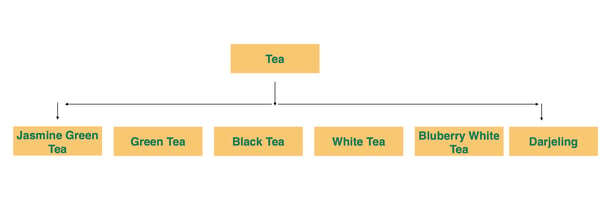
You should have something that looks like this instead:
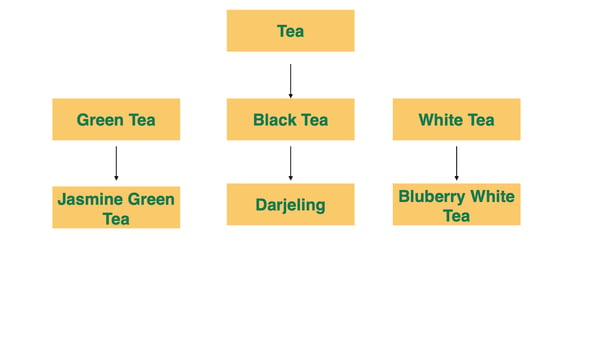
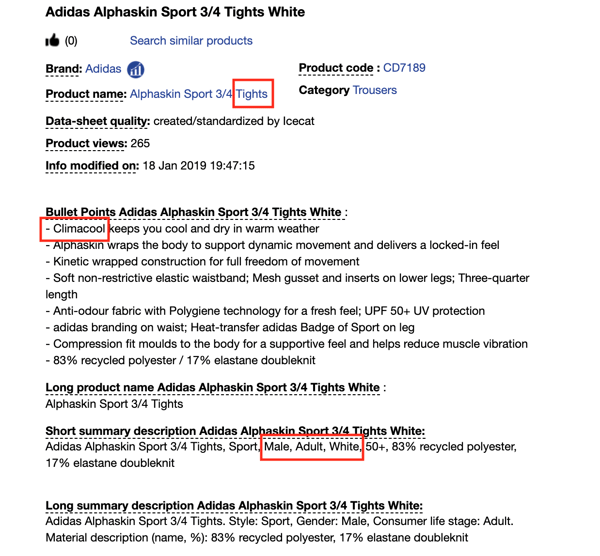
Icecat's approach to centralizing all product information
Ever played the game “Guess Who?”? When making decisions for your product taxonomy, you can think of the design of this game. Your opponent would ask a series of questions to know which character you chose on the other side, and by process of elimination would aim to figure it out.
The same can be done when crafting a decision tree for your product taxonomies by looking at your product data. For example, let’s say Adidas wants to create a subcategory for their Men’s sports tights. Within this category, they’d have separate branches for either color, size, or attribute. Their hierarchy would look something like this:
However, if Adidas is only selling one sports tights product for men, and fifty for women, then does it make sense to have a gendered split?
“You want to make use of the least amount of branches so that your process of elimination is faster. When creating a decision tree for your taxonomies, you need to balance the number of products per node, or branch.” - Leonard Wolters, CDO at Crobox.
For the technical ones amongst you, this process is called Information Gain and is used to train decision trees in machine learning. And who knows? The future of product taxonomies will most likely be automated, where ML will read your product data sets and create taxonomies that make the most sense. But for now, let’s stick to what we know.
Every product category brings out different needs from the users it targets. In fact, these needs vary greatly from one brand to the next. At Crobox, we have developed a spectrum of needs – a method for identifying and classifying consumer needs, fulfilled by product benefits – as a foundation for building our product taxonomy frameworks.
These taxonomy frameworks are supercharged with technical data that’s been translated into customer-centric language, meaning retailers like you can sell products in a way that resonates with your prospective shoppers.
By using our frameworks, you can enrich your data with layers of extra information to improve the shopping experience and link your product attributes and benefits to your customer needs.
Get a sneak peek of the taxonomy templates we offer with the following category reports:
Do you sell a product that doesn’t fit the above categories? Fear not. We specialize in a range of industries with expertise that runs the gamut. Get in touch.